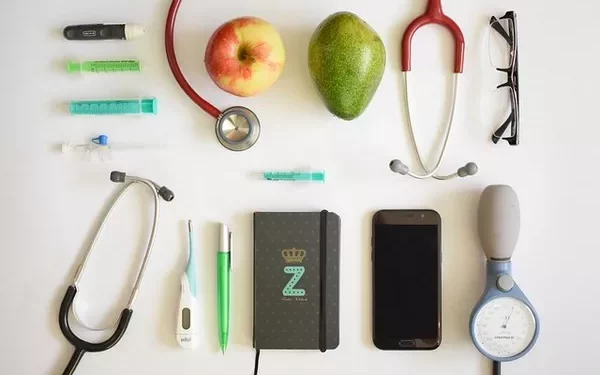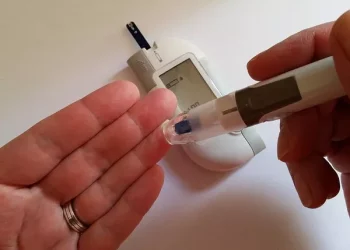Living with diabetes necessitates a vigilant eye on blood glucose levels. Timely and accurate monitoring is crucial for effective management and prevention of complications. However, the market is flooded with a plethora of glucose monitors, each boasting unique features and designs. For patients seeking simplicity and ease of use, selecting the right glucose monitor can be overwhelming. In this guide, we delve into the realm of glucose monitoring devices to identify the easiest glucose monitor for diabetes patients.
Understanding Glucose Monitoring Devices
Before delving into the specifics of ease of use, it’s imperative to understand the types of glucose monitoring devices available:
Blood Glucose Meters (BGMs): These handheld devices require a small blood sample obtained by pricking the fingertip. The sample is then placed on a test strip, and the meter measures the glucose concentration in the blood.
Continuous Glucose Monitoring Systems (CGMs): CGMs offer real-time glucose monitoring by inserting a tiny sensor under the skin, typically in the abdomen. The sensor continuously measures glucose levels in the interstitial fluid, providing data trends and alerts for high or low glucose levels.
Both BGMs and CGMs play crucial roles in diabetes management, with each offering distinct advantages and considerations. However, for the purpose of this article, we primarily focus on BGMs due to their widespread use and relevance to ease of use.
Factors Influencing Ease of Use
When evaluating glucose monitors for ease of use, several factors come into play:
Size and Portability: A compact and lightweight design enhances portability, allowing users to carry their glucose monitor wherever they go. Large and bulky devices may hinder convenience, especially for individuals with active lifestyles.
User Interface: Intuitive and user-friendly interfaces simplify the process of glucose monitoring, reducing the learning curve for patients. Clear display screens, audible alerts, and straightforward navigation enhance usability, particularly for older adults and individuals with limited dexterity.
Sample Size and Test Strip Handling: Devices that require smaller blood samples for testing minimize discomfort and facilitate quicker testing procedures. Additionally, features such as easy insertion of test strips and minimal blood application enhance user convenience.
Speed and Accuracy: Rapid results and high accuracy are paramount for efficient glucose monitoring. Devices that deliver swift results without compromising accuracy empower users to make timely decisions regarding their diabetes management.
Data Management and Connectivity: Integration with smartphone apps, cloud-based platforms, or other digital tools simplifies data management and facilitates remote monitoring. Seamless connectivity enables users to track their glucose levels, share data with healthcare providers, and receive personalized insights for better management.
Top Easiest Glucose Monitors
Based on the aforementioned criteria, several glucose monitors stand out for their ease of use and user-friendly features. Let’s explore some of the top contenders:
OneTouch Verio Flex®:
Renowned for its simplicity and accuracy, the OneTouch Verio Flex® offers a compact design and an intuitive interface. With its color range indicator and automatic wireless syncing to the OneTouch Reveal® mobile app, this glucose monitor simplifies tracking and analysis of glucose data. Its sleek design and straightforward operation make it a popular choice among diabetes patients seeking ease of use.
Accu-Chek Guide®:
The Accu-Chek Guide® excels in usability with its spill-resistant SmartPack® test strip vial and easy-edge test strips, allowing hassle-free handling even for users with limited dexterity. Its large, backlit display and illuminated test strip port enhance visibility in various lighting conditions. Additionally, Bluetooth connectivity enables seamless data transfer to the mySugr app for comprehensive diabetes management.
Contour Next One®:
Praised for its accuracy and simplicity, the Contour Next One® features Second-Chance® sampling, allowing users to apply more blood to the same test strip within 60 seconds if the first sample is insufficient. Its smartLIGHT feature provides instant feedback on blood glucose patterns, while Bluetooth connectivity enables data sharing with the Contour Diabetes app for personalized insights and support.
FreeStyle Lite®:
Recognized for its compact size and ease of use, the FreeStyle Lite® offers a user-friendly interface with a large display and easy-to-read numbers. Its no-coding technology eliminates the need for manual coding of test strips, streamlining the testing process. With rapid results in just five seconds and a tiny blood sample requirement, the FreeStyle Lite® is ideal for on-the-go glucose monitoring.
Dario Blood Glucose Monitoring System:
The Dario Blood Glucose Monitoring System combines a sleek, all-in-one design with advanced technology for effortless glucose monitoring. Its pocket-sized meter plugs directly into a smartphone, transforming it into a fully integrated glucose monitoring system. Users can conveniently track their glucose levels, carbohydrate intake, and physical activity through the Dario app, promoting holistic diabetes management.
See also:How Accurate is Blood Sugar Monitoring?
Conclusion
Selecting the easiest glucose monitor involves considering various factors such as size, user interface, sample size, speed, accuracy, and connectivity. While numerous glucose monitors offer user-friendly features, the OneTouch Verio Flex®, Accu-Chek Guide®, Contour Next One®, FreeStyle Lite®, and Dario Blood Glucose Monitoring System stand out for their simplicity, reliability, and advanced functionalities. Ultimately, diabetes patients should choose a glucose monitor that aligns with their individual needs, lifestyle, and preferences, ensuring seamless integration into their daily routine and empowering them to take control of their health.
Related topics:
How Do Glucose Monitoring Devices Work?



























